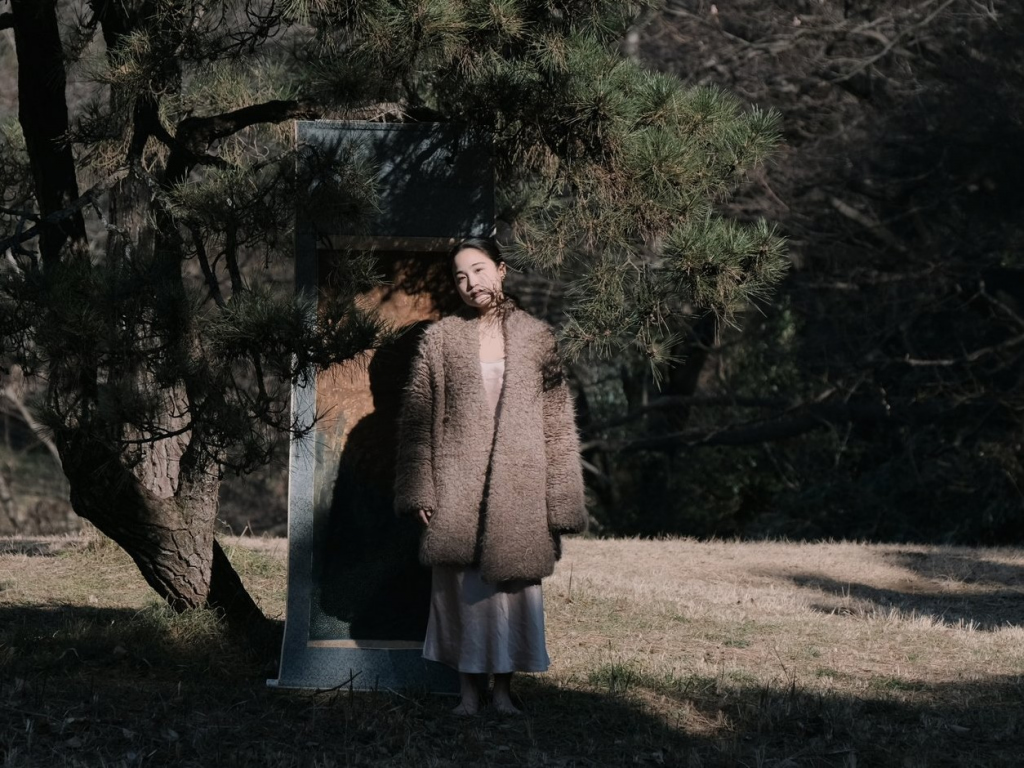Riko Monma is the talk of the Tokyo art scene with her first-ever solo exhibition, Slowscapes showcasing at The Knot Tokyo Shinjuku. The 26-year-old New Zealand native spent years developing her style and is now pursuing a career as an abstract artist, and the blood, sweat and tears are finally paying off. But what would make a person give up a career in chemical engineering for art installations?
We sat down with Monma, at a socially respectable distance for the times, to discuss her incredible journey, starting with leaving her home country at 15 to study in America before making her way to beautiful Tokyo.
Video by Kevin Tamasiro (@tamasiro)
How was attending university at 15?
It was fun, I was a highly illegal kid in a sense, couldn’t drink or really indulge in the party lifestyle that American universities are famous for but it was a good time. I actually went to a small private university in the states, I didn’t want any competition, stress or bullying. I wanted to attend a university that had nice vibes and so I honestly based most of my decisions on the university vibes alone. I kind of ranked them on their vibes.
I ended up attending a university in Vermont. The vibes of the university were very similar to New Zealand and so I fit in pretty comfortably on campus. People were really friendly, the vibes were really chill so I felt comfortable in exploring different personality types and trying out a lot of different characters.
In university everybody finds themselves and in that respect, I was the same as any other kid, I went to piano rooms, chilled on campus and even learned to longboard. There was a time when I was learning to longboard and going super slowly along the campus grounds but then I hit a crack in the road and fell off but nobody laughed. That was the kind of environment I was in, everyone was really chill, really friendly.
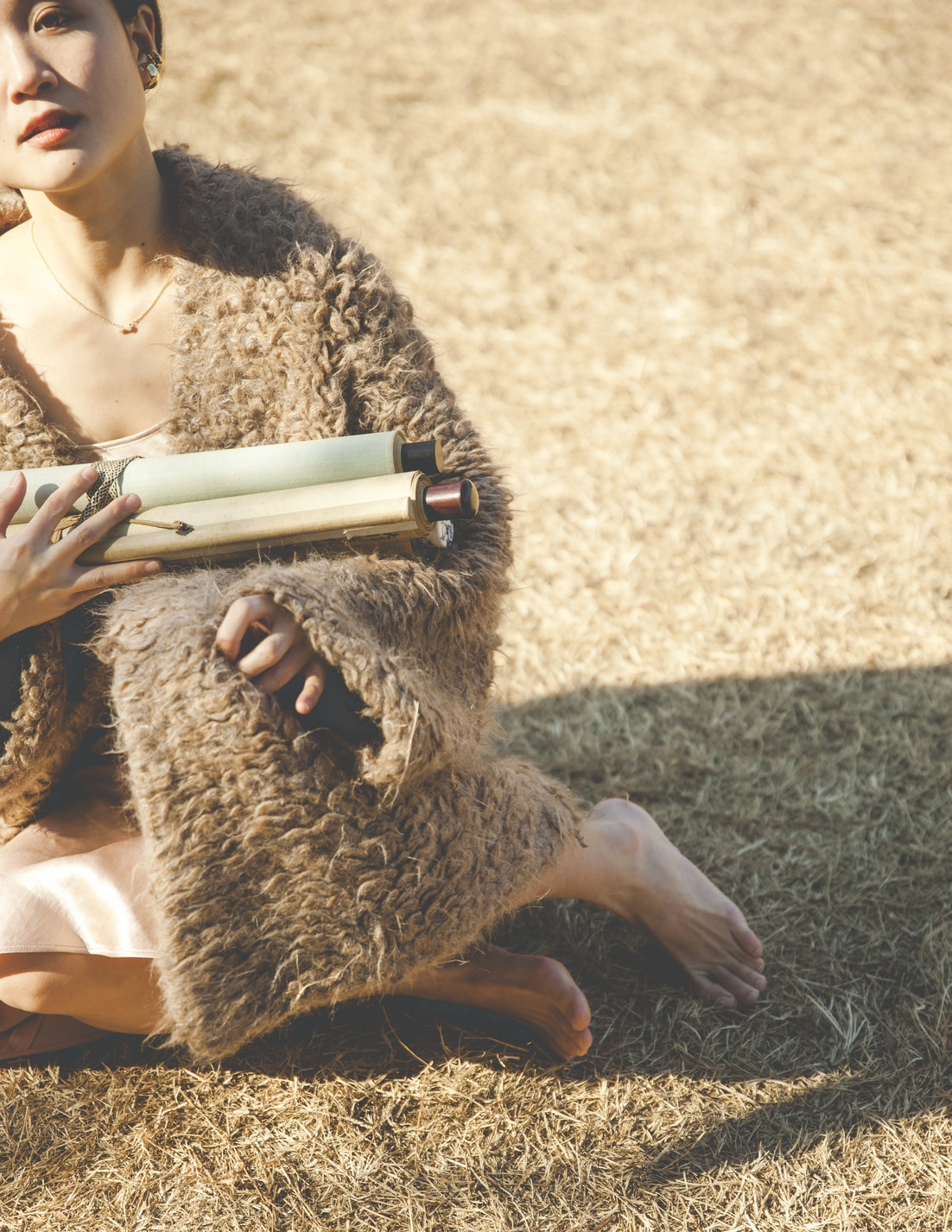
Photography by Karella Mara Raffinan
What was your impression of Japan at the time?
During my sophomore year of university, I used the connections I had with Hokkaido, as that’s where my grandparents live, and decided to talk to a university professor about an internship. During the next summer, I went to Hokkaido and asked the professor directly if I could work under him as an intern. He was nice enough to accept. At that stage I felt like I definitely wanted to make more of a connection to Japan, growing up in New Zealand I always felt a disconnect between myself and Japan and I wanted to change that. I decided to do my master’s in Japan because at that time I didn’t know anything about Japan and thought it best to learn a little about it.
I went to Japan for my masters but it was quite a different experience to what I imagined. I decided I should do my time in Japan. In the end, I did my grad school in Japan for two years and was planning to eventually do my Ph.D. in Japan also but decided against it and chose to graduate instead. Back when I graduated those who studied sciences especially hardcore science like chemical engineering your career choices were limited. Either go onto a Ph.D., work for a chemical engineering company or glass and energy but none of these roles really spoke to me.
Was this when you decided to pursue art instead?
Not yet, actually. I completed my degree and entered L’Oréal, the French cosmetic and beauty company, as a researcher. I was doing chemical formulation, ground research and other fun chemical engineering work. It was really fun and I learned a ton about formulations. I could probably whip up a few L’Oréal things from scratch if I had the components. They were all super valuable skills but at the same time it wasn’t enough creative control for me, I was falling into a pattern. I wanted full control over the whole creative process instead of the marketing team determining what I make. I wanted to create something and have the marketing team sell it.
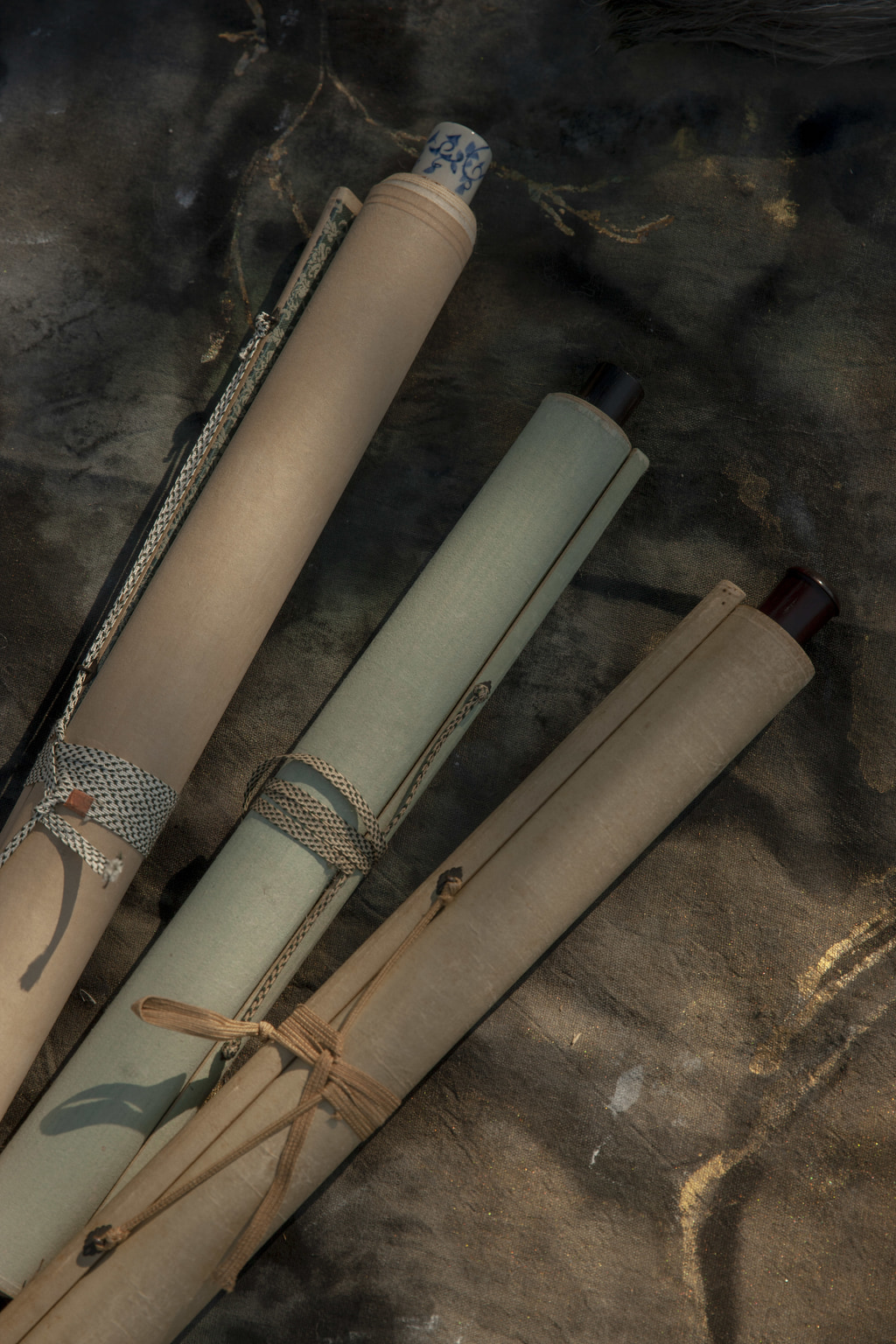
Photography by Karella Mara Raffinan
It started when I made the jump inside L’Oréal from research to product development. It was the only product development in Japan, while L’Oréal has many different brands affiliated with it, the product development branch of the company is pretty special. It was working with this team that I learned how to actually run a business. Product development oversaw everything from research to conception to production and distribution while managing everything from costs, production, sales, timeline, troubleshooting and the sustainability factor. It was a lot of work as you were providing marketing with different options that they would choose from and eventually sell. It fit right in with my skill sets and I really loved working for L’Oréal but it was super busy! I would occasionally leave the office at pretty late. I wanted to be able to control my own schedule, create and find my own time table, it was at this time that there were a few personal family emergencies that came up and I decided it best to leave the company.. It was at this stage, after three years to the day in L’Oréal, I decided to quit the company and move back to New Zealand for a little casual work in Queenstown.
If you wanna do something, just do it and if you’re a good person those around will support you
What did you do in Queenstown?
I was working at Cookie Time, the New Zealand cookie store, making cookies in a cute outfit every day. It was exactly what I needed after three years in that high-pressure environment, I could bring myself back down and do jobs that allowed me to interact with customers on a face to face basis.
There is this interesting mentality in New Zealand, if you wanna do something, just do it and if you’re a good person those around will support you. I eventually started working in a little boutique with a woman who would source sustainable clothing. The customer base of this store was completely different from those I had met at Cookie Time or the chemical engineering job. I was surrounded by people who were willing to get up and chase their dreams which in turn made me want to do the same. After getting used to life in Queenstown I decided to work three days in the clothing store and spend the rest of my time working on my own art and design. I picked up photography, graphic design and any other skill anyone was willing to teach me. Queenstown is like the Silicon Valley of New Zealand, there are tons of start-ups, people willing to start new businesses and massive creative energy. I started working wherever I could, doing free jobs for companies, photography, design, anything to build up my experience. I realized that this was my art education and I could pick and choose what I wanted to teach myself.
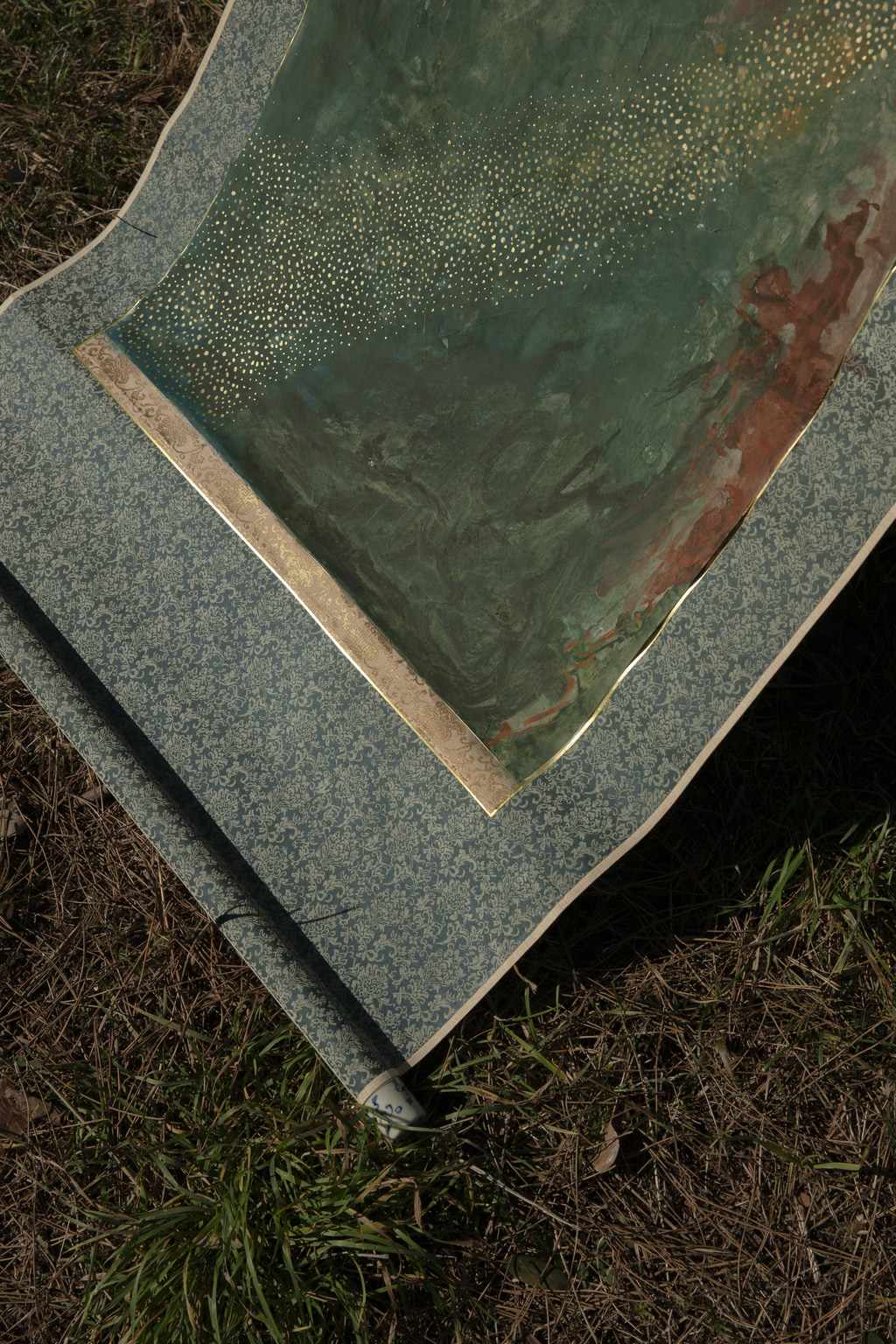
Photography by Karella Mara Raffinan
How did you use these skills to develop your unique art style?
When you edit a photograph, you’re thinking about the color palette, the composition, light balance. Everything is essential for the final result. When it comes to design the opposite is true, you are now controlling the composition. So you are seeing the composition of a photo, for example, and trying to mimic that in your design to find the perfect balance. And then in art, you’re just free-forming all of the things you’ve learned. They helped each other. It was like a simultaneous learning experience. It was really at that stage that I knew for sure, right, this is my art school.
How did you make your way back to Tokyo?
I knew a lot of people in Tokyo at that time. I felt like if I want to make something out of myself, I might want to go to Tokyo first. The people that I was working with in Queenstown were really wealthy people who had the means to buy a second property in a foreign land. While it is amazing, I felt that in order for my art to live up to these people’s expectations I should take some time in a busier city, like Tokyo, in order to get some experience.
I returned to Tokyo in 2018 and just started advertising that I do all of these things as a freelancer. And before long I started getting jobs, and some of it was incredibly hard. Because usually in Japan, they sometimes employ you “as a hand” and not a creative mind.
People telling you: “We’ll give you the job if you come out and have a drink with us”
What are some of the hardships that you faced as you tried to establish yourself in Japan?
There were some rough moments, especially as a woman. Always being invited out for drinks as opposed to job gigs or people telling you: “We’ll give you the job if you come out and have a drink with us.” Throughout all of this, I started realizing that I could pick my clients and only work the jobs that I really wanted to do. So, at one point, I started cutting out all the jobs that didn’t speak to me as an artist, even if they were big corporate jobs from companies with globally known names. I would cut them out if their philosophy did not align with mine.
Your art is about emotion, be it positive or negative. What do you want visitors to feel with Slowscapes?
A sense of peace. That’s always my concept. I think it’s really because I have experienced that strenuous past that I want people to view my art and understand that you can do it too, sometimes it just takes a shift in perspective.
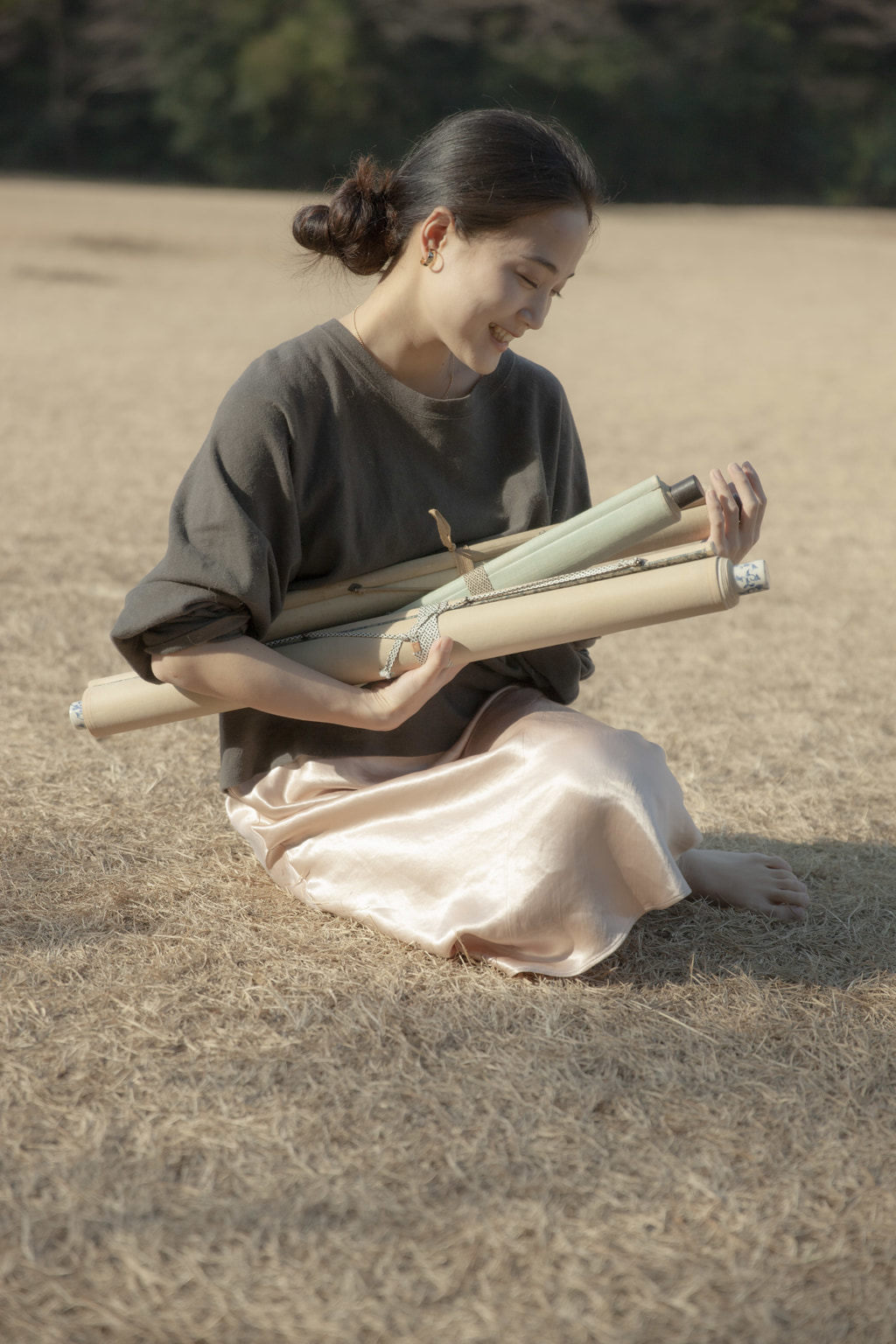
Photography by Karella Mara Raffinan
Do you find inspiration for your art in nature?
Yes, yes, absolutely! I use a lot of natural tones, I create my own pigments sometimes using leaves and rocks and my abstract forms are always representative of nature. When we think of art we usually think of classical art: portrait paintings very pre-world war aesthetics. Art, in reality, has existed since the existence of humanity, ancient civilizations had art, primitive humans would even paint their own portraits on cave walls. Even ornamentation, what you’d associate with Greek or Italian design, what you associate with like Byzantine or Moorish art, these are all forms of art that took nature as an inspiration. This is all art.
When I first started studying art all I studied was ornamentation. It’s such a powerful concept even to this day, for example, you see a certain combination of abstract shapes and you know instantly, “Oh that’s a Japanese pattern,” for example.
I wanted to take that concept of abstraction of nature and place it into my own terms, into my own art, my own view of nature and how it is being perceived by me.
Finally, do you have a favorite art gallery in Tokyo?
I’d have to say NIDI Gallery in Ebisu. The most popular art in Tokyo seems to be either really old art or more modern street art. My style is neither, I’m more of what they call “slow art”. That means it takes slightly more time for the viewer to “get it” but my art is supposed to allow the viewer a chance to slow down and really take it all in.
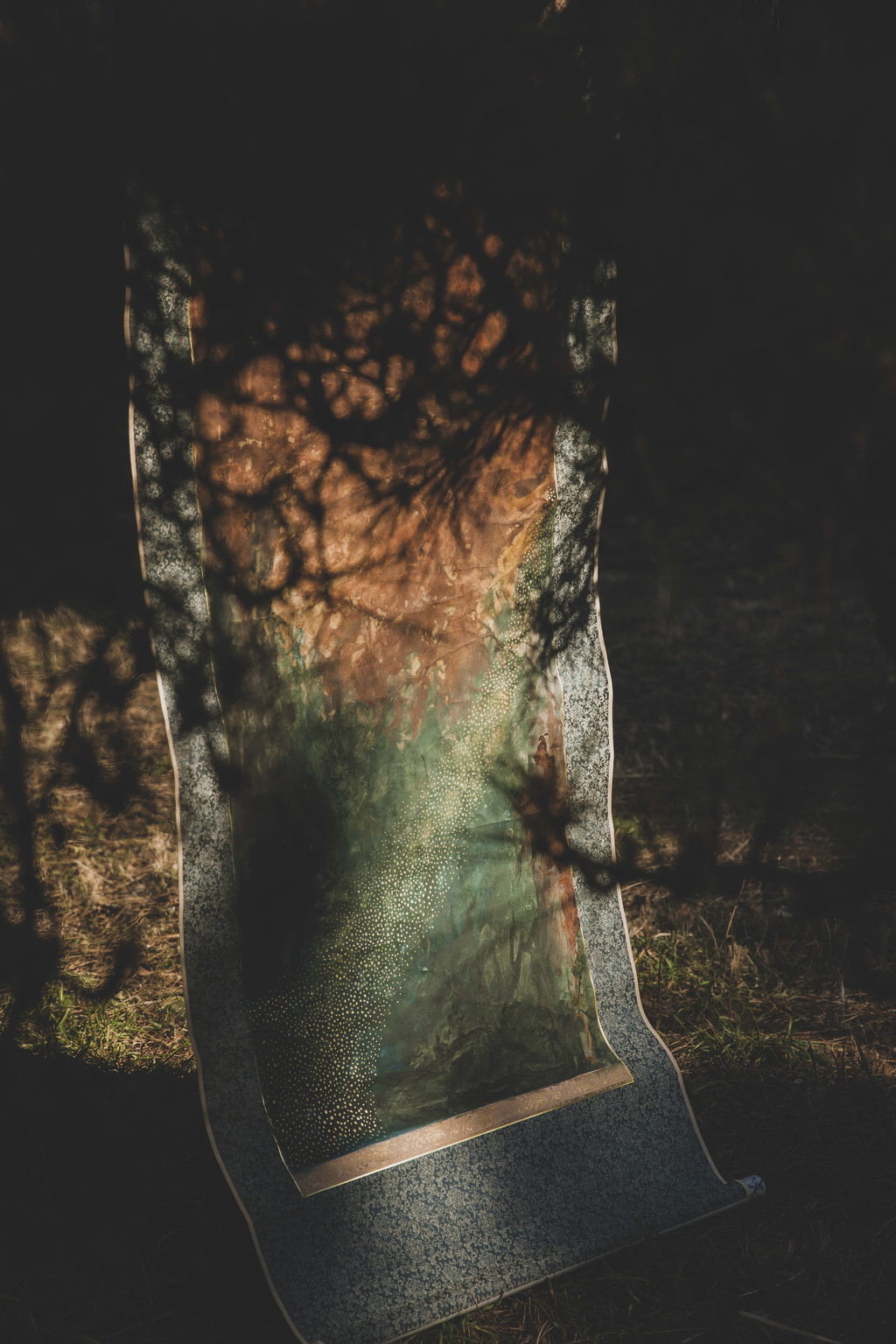
Photography by Karella Mara Raffinan
Keep up with Monma on Instagram.
Exhibition Information
Slowscapes
When: Feb 4 to May 5, 2021
Where: The KNOT TOKYO Shinjuku 2F Lounge
Inquiries: [email protected]
Instagram: The Knot Tokyo Shinjuku
Featured Image by Kevin Tamasiro

